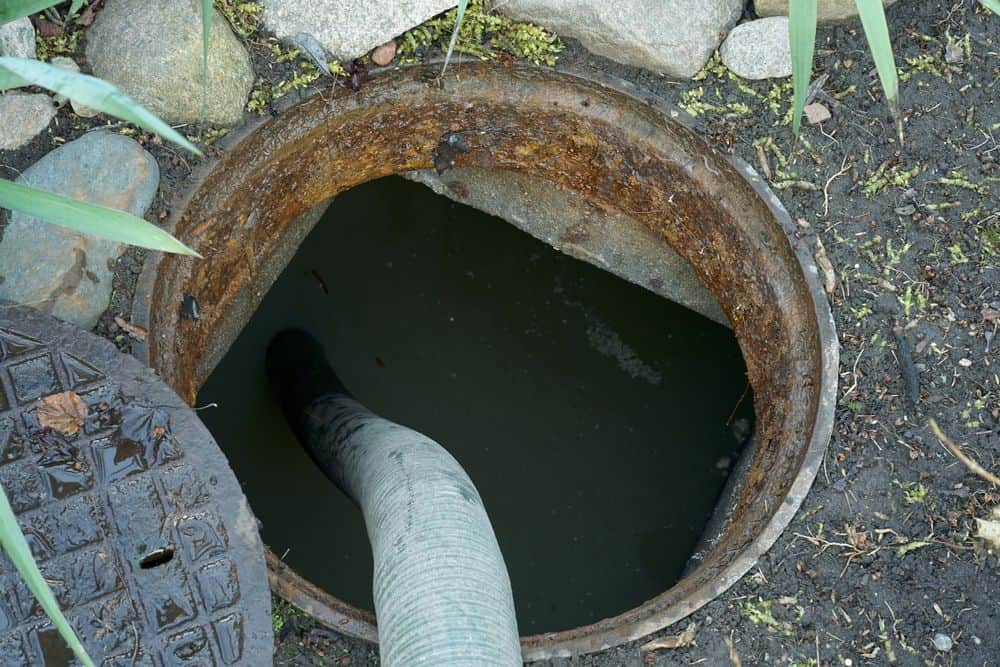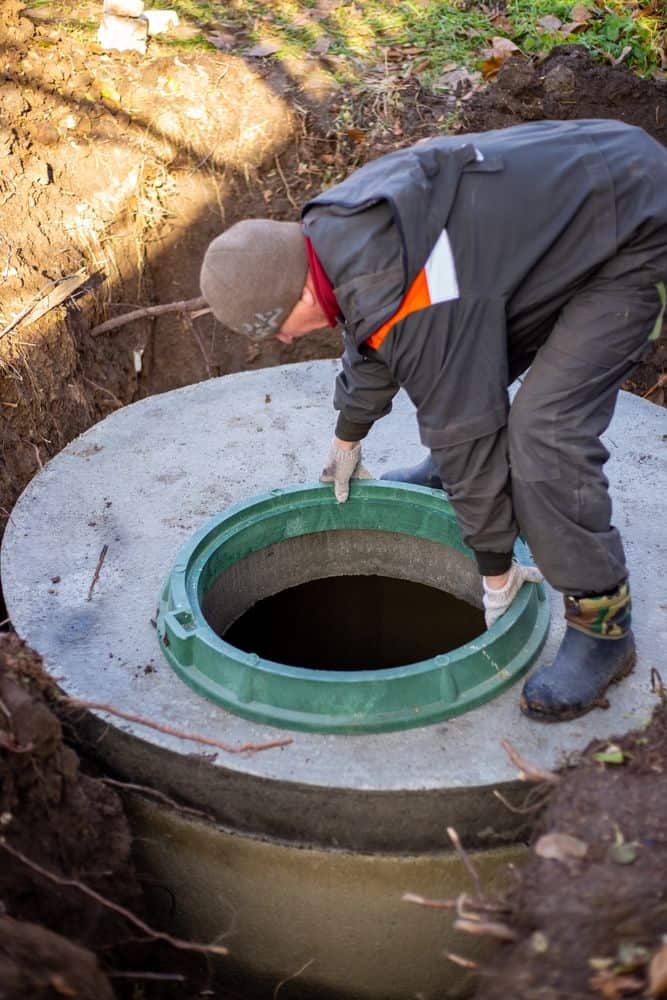Summary:
Recognizing Emergency Cesspool Situations That Need Immediate Pumping
You might have a cesspool emergency if you notice sewage backing up into your home, with wastewater coming out of drains or toilets, bad smells, slow draining, or gurgling sounds from pipes. These aren’t problems you can ignore until Monday morning.
When your cesspool is full, wastewater has no place to go but back up through your drains, toilets, and other plumbing fixtures. The health risks escalate quickly—raw sewage contains harmful germs such as E. coli bacteria, and exposure can cause serious illnesses through direct contact or inhalation of airborne particles.
Wet spots or standing water in your yard could mean your cesspool is overflowing, which is serious and needs fast attention. Don’t wait to see if the problem resolves itself.
Warning Signs That Demand Same-Day Cesspool Service
There are telltale signs that your cesspool is overfilled and needs to be pumped: water overflowing into your yard surrounding your tank, bad continuous odor, and drains backing up. Each of these signals represents a different level of urgency, but all require professional intervention.
If there’s a blockage or overflow in your cesspool, this prevents waste from draining properly, with one of the first signs being a strong, bad smell coming from your plumbing system that can smell like sewage or rotten eggs. This isn’t something air fresheners can mask—it’s your system crying for help.
Standing water near your cesspool is a big red flag, often indicating your cesspool may be overflowing and causing sewage to leak into the surrounding area, starting as damp patches but escalating into full puddles if left untreated. The longer you wait, the more expensive the cleanup becomes.
Signs of a failing cesspool include sewage backups, soggy areas in your yard, and unusual gurgling sounds from drains. When multiple symptoms appear simultaneously, you’re likely facing a complete system emergency that requires immediate professional assessment.
The key difference between routine maintenance needs and true emergencies lies in the speed of onset and severity of symptoms. Emergency situations typically involve active sewage backup, overwhelming odors that penetrate your living space, or visible contamination of your property.
Health and Property Risks of Delaying Emergency Cesspool Pumping
A sewage backup emergency requires immediate professional help, with 24/7 emergency response teams equipped with specialized tools to safely remove backed-up waste and fix your system. The risks of delaying this service extend far beyond inconvenience.
An overflowing cesspool can be a serious health hazard as it can contaminate drinking water sources and create a breeding ground for disease-carrying pests. Long Island’s sandy soil means contamination can spread quickly through groundwater, potentially affecting neighboring properties and local water supplies.
The price for failure is steep and it’ll cost thousands of dollars to have your system replaced, with numbers on that bill you won’t like. What starts as a few hundred dollars for emergency pumping can escalate into complete system replacement costing $10,000 or more.
Cesspool emergencies can be serious health hazards that require immediate attention, and the most important thing you can do is recognize the signs and take prompt action to protect yourself, your household, and your community. Your family’s health isn’t worth the risk of waiting.
Property damage extends beyond the immediate area. Sewage backup can destroy flooring, walls, and personal belongings. The cleanup and restoration costs often exceed the original emergency service call by thousands of dollars. Insurance companies frequently deny claims for cesspool-related damage, especially when homeowners delay necessary maintenance.
Environmental consequences affect the entire Long Island community. Nitrogen in sewage easily seeps into the ground, then to groundwater, and ultimately to our bays and harbors where it can lead to excess nitrogen and toxic algae blooms.
Want live answers?
Connect with a EZ Cesspool Long Island expert for fast, friendly support.
How to Schedule Emergency Cesspool Pumping in Long Island
We answer emergency cesspool pumping calls LIVE 24/7, 365 days per year. When you’re facing a cesspool emergency, you need service providers who understand the urgency and can respond immediately.
We offer 24/7 emergency help and can often reach you within an hour or two, bringing special tools to quickly find and fix the problem. The key is knowing what information to provide when you call.
If you suspect that your cesspool is overflowing or experiencing emergency conditions, you should immediately stop using any water-consuming appliances and call us to assess the situation. This first step prevents additional waste from entering an already compromised system.
Essential Information for Emergency Service Calls
When calling for emergency cesspool pumping, have specific details ready to help our technicians prepare properly. Describe exactly what you’re experiencing: sewage backup locations, odor intensity, visible standing water, and how long symptoms have been present.
Your address and accessibility information matter significantly. Let our dispatcher know if your cesspool location is difficult to access, if there are obstacles like vehicles or landscaping, and whether the access cover is visible or buried. This information helps our technicians bring the right equipment and arrive prepared.
Mention any recent changes that might have contributed to the problem. Heavy rains, increased household usage, or recent plumbing work can all impact cesspool function. This context helps us diagnose the issue more quickly and provide targeted solutions.
While you’re waiting for our professionals to arrive, stop using any water appliances including faucets, showers, toilets, and washing machines. Every gallon you add to the system worsens the emergency and complicates the repair process.
Safety precautions become critical during emergencies. Keep family members and pets away from affected areas. Sewage exposure poses serious health risks, and contaminated areas require professional cleanup. Don’t attempt DIY solutions—they often worsen the situation and create additional hazards.
Document the situation with photos if safely possible. This documentation helps with insurance claims and provides our technicians with visual information before arrival. However, never prioritize documentation over safety or immediate action.
What to Expect During Emergency Cesspool Service
Our professional cesspool technicians will first assess the condition of your cesspool, bring necessary equipment such as a vacuum truck, locate and uncover the cesspool access point, then pump out accumulated waste and sludge using specialized equipment. Emergency service follows a systematic approach even under urgent conditions.
After pumping, our technicians may inspect the cesspool for signs of damage or issues requiring attention, safely transport and dispose of collected waste at authorized facilities following environmental regulations, then clean the area and restore the access cover to its original position.
Emergency pumping costs typically range higher than routine service due to after-hours response and urgent nature of the work. However, the cost to pump a septic tank is usually only a few hundred dollars while replacing an entire system can cost over $6000, making it much more fiscally responsible to pay for emergency pumping than face repair or replacement costs.
Our emergency team understands Long Island’s unique cesspool challenges. We know the unique septic needs of Long Island homes, including soil conditions, regulatory requirements, and common system configurations found throughout Nassau and Suffolk counties.
Expect immediate relief from active sewage backup, though complete system restoration may require follow-up services. Emergency pumping addresses the immediate crisis, but underlying issues like damaged pipes or system overload need separate attention. We provide clear explanations of what emergency service covers and what additional work might be necessary.
Post-emergency recommendations typically include scheduling regular maintenance to prevent future crises. Cesspools should typically be pumped every 2-3 years, but frequency may vary based on usage and system size, and we can provide personalized maintenance schedules.
Preventing Future Emergency Cesspool Situations
The best way to avoid septic problems is simply proper maintenance, with failure to do regular maintenance becoming a very big problem in the long run. Emergency situations often result from neglected routine care rather than sudden system failure.
Regular maintenance ensures cesspools function properly and helps prevent costly repairs, with scheduling inspections and pumping every 3 to 5 years preventing overflows and backups while extending the system’s lifespan. Preventive care costs a fraction of emergency repairs.
Understanding your system’s capacity and household usage patterns helps you anticipate maintenance needs. The size of the cesspool, wastewater volume generated by the property, number of occupants, and usage patterns all play a role, with waste composition, additives, and local regulations also considered when establishing pumping schedules.
At EZ Cesspool Long Island, we provide both emergency response and preventive maintenance services throughout Nassau and Suffolk counties. Our 20+ years of local experience and commitment to transparent pricing make us a trusted partner for Long Island homeowners facing cesspool challenges.





